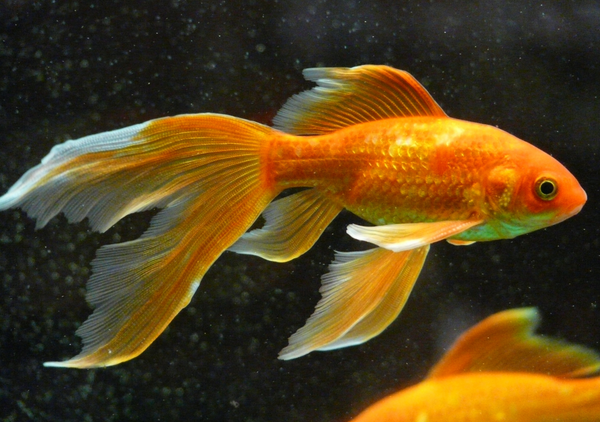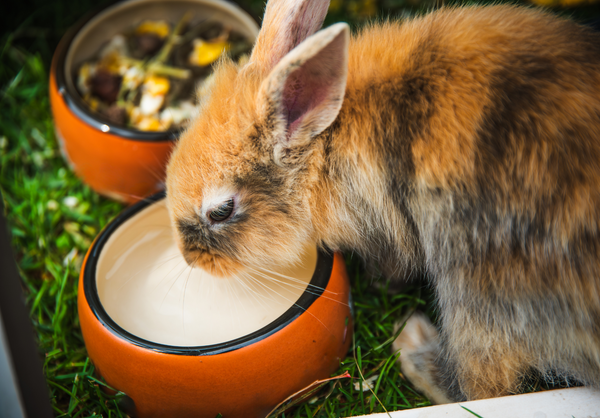Marine aquarium keeping is a very intriguing and rewarding hobby. If you are interested in starting your own tank, all the different opinions and directions found online can be intimidating. Right now, we are going to look over the simple, general steps on what it takes to start up your own saltwater aquarium!
1. Choosing Your Tank
 Choosing your tank should always be your first step, as mostly all your equipment afterwards varies depending on your tank size. As with most things, bigger is better (as large as you can afford or have room for)! Consider your waste to water ratio. A pellet of uneaten fish food in a small water body will effect the water quality greater than that of a large water body. This means the larger the tank, the easier it becomes to keep your ammonia levels minimal, and your pH & salinity consistent. For saltwater tanks, we recommend a pre-drilled tank to allow for a sump filter. If you found a tank you love that is not drilled, don't fret! You can purchase an Overflow Box, a hang-on-back overflow that performs the same duties as a pre-drilled tank, that can be mounted on to most aquariums! It goes without saying that aquariums are VERY heavy, get yourself a high-quality appropriately sized stand specifically for aquariums. Inside the stand should be hollow, to allow storage for your filter and other maintenance equipment.
Choosing your tank should always be your first step, as mostly all your equipment afterwards varies depending on your tank size. As with most things, bigger is better (as large as you can afford or have room for)! Consider your waste to water ratio. A pellet of uneaten fish food in a small water body will effect the water quality greater than that of a large water body. This means the larger the tank, the easier it becomes to keep your ammonia levels minimal, and your pH & salinity consistent. For saltwater tanks, we recommend a pre-drilled tank to allow for a sump filter. If you found a tank you love that is not drilled, don't fret! You can purchase an Overflow Box, a hang-on-back overflow that performs the same duties as a pre-drilled tank, that can be mounted on to most aquariums! It goes without saying that aquariums are VERY heavy, get yourself a high-quality appropriately sized stand specifically for aquariums. Inside the stand should be hollow, to allow storage for your filter and other maintenance equipment.
2. Necessary Parts & Equipment
Setting up your first tank will require a handful of necessary equipment & tools to keep your aquarium running smoothly. The last thing you want is to be having tank problems from the get go. Below is a shopping list of necessary marine tank parts & equipment you should have ready before continuing with your tank, and the purpose they serve.
Filter: Filters your tank water, comes in many styles including power filter, canister filter, sponge filter & sump filter. Sump filter is highly recommended for marine tanks.
Protein Skimmer: Used to remove organic compounds & waste, as well as provide aeration for your aquarium.
Refractometer: Used to accurately measure the salinity or specific gravity of your salt water. Must be used with AccuraSea calibration fluid.
Water Conditioner: Conditions the water and eliminates harmful chemicals found in tap water. Pisces recommends: Marine Pro Start Up Kit.
Heater & Thermometer: Heats your aquarium water to your desired temperature.
Marine Salt: Newsflash, saltwater needs salt! Use to mix with water to create desired salinity level in your aquarium water.
Live Rock: A staple of all marine tanks, chunks of reef fragments naturally colonized by invertebrates, corals, sponges and millions of beneficial nitrifying bacteria.
Sand: Aquarium substrate, should be either dry or live aragonite.
Water Test Kit: Used to monitor pH, ammonia, nitrite & nitrate levels.
Lights: Use appropriate aquarium lighting, your lighting may need to be more specific depending if your are keeping corals.
Powerhead Circulation Pump: Recreates water movement and currents found naturally in the wild.
Cleaning Supplies: Scrub brush, net, siphon, etc. Pisces Recommends: Magfloat Floating Brush.
3. Setting Up
First, you will want to get your aquarium and stand where you want it to go. If it is in a carpeted area, line the perimeter with garbage bags. This tank will get very heavy, very fast. Pour your sand into the tank, and prepare your saltwater mixture in a separate tub (aim for 1.024 specific gravity). Once you have created ideal water (or purchased pre-mixed water), pour into the tank. Pisces recommends: Marine Pro Aquarium Start-up Kit to help jump start your aquarium water. Rinse your live rock in a smaller bucket of prepared saltwater to get all the loose debris off and place in the water. This is where you can be creative, think of the live rock as your foundation for the aquarium and place how you please. After your rocks have been placed, it is time to open up some boxes. If you have a sump filter, you can place your skimmer & heater in the sump tank, freeing up space in your display tank. The thermometer and circulation pump must be placed in the display tank. After your sump is set up, completed with the intake, outtake and skimmer, run the filtration system to make sure everything is running smoothly with uniform water flow. If everything looks A-OK, let your system run for 3-4 weeks, preforming 10%-15% water change every 3-4 days for optimal water quality and curing of live rock. Make sure your lights are in working order, however we recommend turning them off during the cycle process, as to not attract any unwanted algae.
4. Introducing Marine Life
After 3-4 weeks of filter time, conduct a water test using your test kit mentioned on the list above to measure your pH, ammonia, nitrite & nitrate levels. If everything looks good, that is your green light to add your first tank inhabitants! The first tenants of your new tank will be your clean up crew, made of various small crabs and snails. A good bundle to start choosing from include:
Turbo snails: Larger snails that eat algae fast and aggressively.
Asterea snails: Small snails that attack brown and green algae from aquarium walls.
Nassarius snails: Bury themselves below the sand bed and sifting through looking for food.
Hermit crabs (red and blue legged): Excellent scavenger, will eat un-eaten fish food & waste.
Emerald crabs: Is known to eat bubble algae, and will also clean up un-eaten fish food.
Peppermint shrimp: Small shrimps that are great for controlling Aiptasia
Coral Banded shrimps: Larger but beautiful shrimps pick off live rock and debris along the sand bed.
 A general rule of thumb for the number of clean up crew you should keep in your tank is 1 snail per gallon, and 1 crab/shrimp per 4 gallons. This can vary depending on the size of the crew, and the layout of your tank. Don't favor one invert, accumulate a nice variety to cover all areas of the tank! Click Here to watch a video on how to properly introduce livestock into your aquarium. Allow an additional weeks of cycling afterwards.
A general rule of thumb for the number of clean up crew you should keep in your tank is 1 snail per gallon, and 1 crab/shrimp per 4 gallons. This can vary depending on the size of the crew, and the layout of your tank. Don't favor one invert, accumulate a nice variety to cover all areas of the tank! Click Here to watch a video on how to properly introduce livestock into your aquarium. Allow an additional weeks of cycling afterwards.
5. Adding Corals (Optional)
 It is up to your whether you decide to keep live corals is entirely up to you. A healthy marine ecosystem can be achieved with or without live corals. Corals are entirely dependent on their ecosystem and placement inside of their aquarium. Corals will be dependent on precise light, current & water quality in your tank. The best option is to visit your local marine store and talk to an expert about what corals may be right for your tank set up. Some hearty beginner corals include Polyps, Brain corals, Sea mats & Zoanthids. Once again, perform a water quality check to make sure your water quality is prestige before adding any corals. If corals have been added, once again let cycle for an additional 2 weeks.
It is up to your whether you decide to keep live corals is entirely up to you. A healthy marine ecosystem can be achieved with or without live corals. Corals are entirely dependent on their ecosystem and placement inside of their aquarium. Corals will be dependent on precise light, current & water quality in your tank. The best option is to visit your local marine store and talk to an expert about what corals may be right for your tank set up. Some hearty beginner corals include Polyps, Brain corals, Sea mats & Zoanthids. Once again, perform a water quality check to make sure your water quality is prestige before adding any corals. If corals have been added, once again let cycle for an additional 2 weeks.
6. Adding Your Fish
Finally the moment you have been waiting for, adding your first fish! Your tank has now been cycling for 6-8 weeks and is now ready for the addition of the fish. Like coral and inverts, there are varying degrees of difficulty depending on the species of fish. If you are looking for a variety, you want to focus on housing smaller, less aggressive fish. Our best recommendations are:
Damselfish: Small, hardy and inexpensive. Bright vivid colors and great to break in a new tank. These fish are territorial but non-aggressive towards other fish, with the exception of the Three striped & Domino damsels, who are very aggressive.
Clownfish: Another great starter, the unmistakable orange and white striped clownfish! It is commonly assumed that these fish need an anemone, however this is untrue and anemone's are not recommended for beginner tanks due to the level of difficulty to keep them alive. These fish are peaceful and are not picky eaters.
Blennies & Gobies: My personal favorite, you fill find gobies and blennies hiding in the live rock and among the sand bed and decor. They will eat almost anything that lands in front of them, and are very entertaining.
Firefish: Arguably the most beautiful beginner fish, the firefish stays small and is very peaceful towards its tank mates. The top dorsal fin will stand erect when conditions are par, and lower down and lay flat when stressed.
Cardinalfish: Another popular fish in the aquarium trade, they are very simple to keep. Hardy, peaceful and fun to watch!
 The cardinal sin of new aquarium keepers is overcrowding your tank. It is normal to be overwhelmed by all the beautiful fish and want to fill your aquarium. Resist the urge!! Once again, visit your local marine dealer and ask as much questions as your can about what fish are right for you. A general rule of thumb is 1" of fish per every 5 gallons of water (not including sump). That may not sound like much at all, but with good reason. Fish are territorial, the more territory there is to go around, the happier the fish will be. Additionally, less fish per gallon will make it much easier to maintain a high water quality for your tank. a small amount of happy, healthy fish is better than a large amount of unhealthy, stressed fish!
The cardinal sin of new aquarium keepers is overcrowding your tank. It is normal to be overwhelmed by all the beautiful fish and want to fill your aquarium. Resist the urge!! Once again, visit your local marine dealer and ask as much questions as your can about what fish are right for you. A general rule of thumb is 1" of fish per every 5 gallons of water (not including sump). That may not sound like much at all, but with good reason. Fish are territorial, the more territory there is to go around, the happier the fish will be. Additionally, less fish per gallon will make it much easier to maintain a high water quality for your tank. a small amount of happy, healthy fish is better than a large amount of unhealthy, stressed fish!
Tank Maintenance:
Naturally, you cant have a stunning marine aquarium without a little elbow grease. Daily chores should consist of feeding, health inspection, a quick check of the specific gravity using your Refractometer (Pisces recommends: ATC Portable Refractometer), and emptying out your protein skimmer collection cup. It may sound like lots to do everyday, but in reality it can be accomplished in 10 minutes or less. Once a week, conduct a full water test of ammonia, pH, nitrite & nitrates, and any other testing you may need 9if you have a reef aquarium). This is a good time for a quick glass clean with your Magfloat. You will need to perform a 15% water change every 2 weeks, even if the water is not lost to evaporation. Every 2-3 months it is a good idea to perform a deep clean of your filtration system and get rid of any gunk that has built up. Lastly, if you have reefs and coral ,check your lights every 8-12 months to check if they are still have optimal output.
That just about sums up the basics of starting your fist salt wwater aquarium! If you have any questions or inquires, please stop by Pisces Pet Emporium, or shoot us a message of Facebook. Happy fish keeping!




